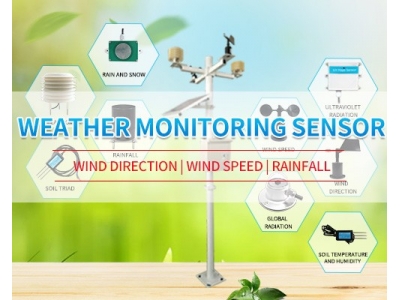
What types of weather station sensors in a weather station?
Most of us are aware that a weather station is more than just a single instrument. It is made up of a number of weather station sensors that work together to produce a bigger entity.

Most of us are aware that a weather station is more than just a single instrument. It is made up of a number of weather station sensors that work together to produce a bigger entity.
Most of us are aware that a weather station is more than just a single instrument. It is made up of a number of weather station sensors that work together to produce a bigger entity.
A weather station is a collection of sensors and other devices that work together to provide accurate weather information. These tiny gadgets aid in the collection of data from both the inner and outside worlds.
These weather station sensors monitor the surroundings and send the information to a display device. This device allows us to check the weather from the comfort of our own homes.
Most individuals, however, find it difficult to comprehend how this process works. The following article will help you understand what these different kinds of weather station sensors do.

A thermometer measures temperature by using an expansion or contraction property of certain materials. They can be used for measuring air pressure and weather, humidity, wind speed, etc. In addition to being useful for monitoring indoor temperatures, they also serve as outdoor indicators.
For example, if there’s no breeze blowing through your house, then chances are high that the thermostat has been set too low. On the contrary, when the wind blows strongly, then the thermostat should be turned down.
Barometric gauges are designed to measure atmospheric pressure. Their main purpose is to detect changes in barometric pressure caused by variations in altitude.
When we talk about altimeters, we mean those which have a needle attached to them. Altimeters usually come equipped with a digital readout so that users can easily see the current reading.
Wind speed meters are similar to altimeters, but they differ in one important aspect – they measure not only the change in altitude but also the direction of movement.
Thus, they allow people to know whether winds blow towards or away from them. Some models even include a compass feature so that users can tell where the wind comes from.
Rainfall detectors are basically rain-gauge-like instruments. They consist of two parts; a container and a sensor. The container collects rainfall while the sensor detects drops falling on it. Once the detector senses a drop, it sends out a signal to indicate that precipitation has occurred.
Hygroscopes measure relative humidity levels inside a room. Unlike thermometers, hygrometers don’t need any direct contact with the atmosphere. Instead, they use water vapor content in the air to determine its level of saturation. As such, they require less maintenance compared to their counterparts. However, they aren’t very precise because they only give approximate readings.
Humidity monitors are quite simple yet effective tools. All they do is keep track of the amount of moisture present in the surrounding environment. If the humidity level rises above a particular point, then the user gets notified via a light bulb or buzzer.
Temperature stations are essentially thermometers placed outdoors. They collect data regarding the ambient temperature at various locations around the world. Users can access this data online or download it into spreadsheets.